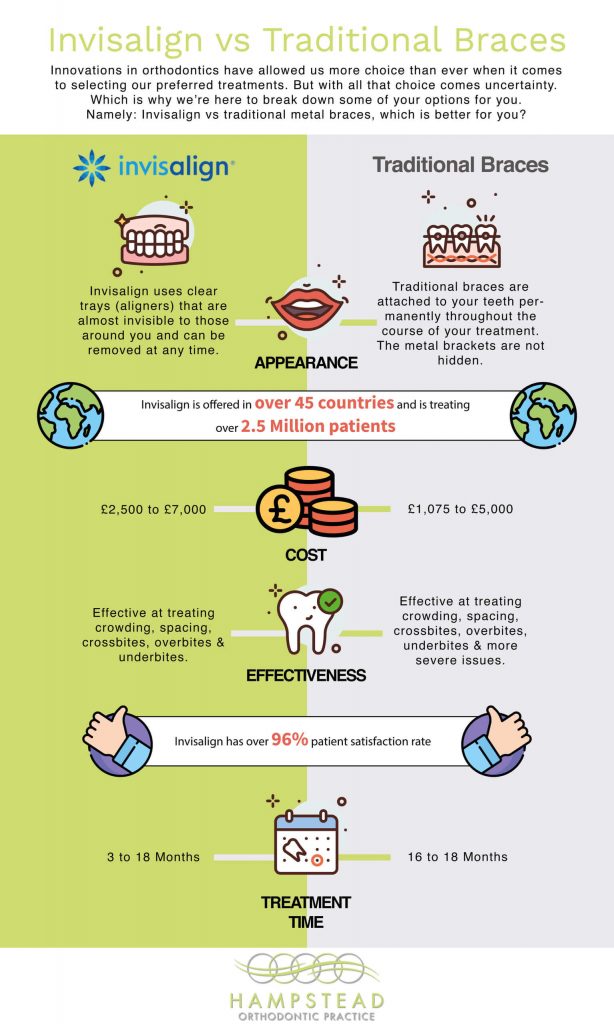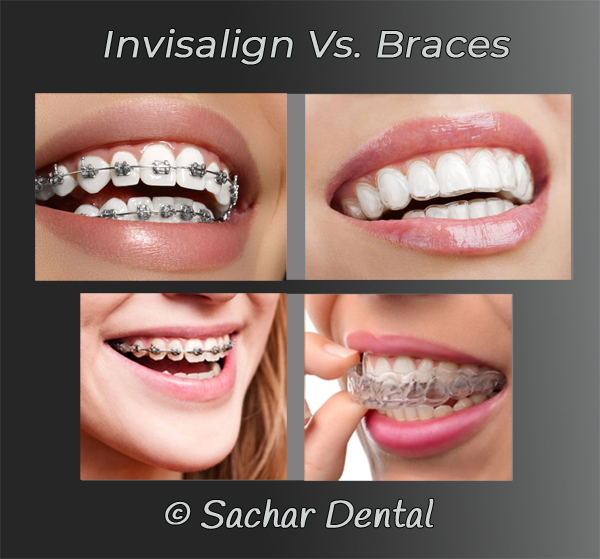
Introduction
When it comes to straightening teeth, two popular options are Invisalign and traditional braces. Both methods have their own set of advantages and disadvantages. In this article, we will explore the pros and cons of each treatment to help you make an informed decision.
Effectiveness
Traditional braces have been used for decades and are known for their effectiveness in correcting various dental issues. They can address complex cases and provide precise control over tooth movement. On the other hand, Invisalign is a relatively newer technology that uses clear aligners to gradually shift teeth into place. While Invisalign is effective for mild to moderate cases, it may not be suitable for severe orthodontic problems.
Aesthetics
One of the main advantages of Invisalign is its aesthetic appeal. The aligners are virtually invisible, making them a popular choice for individuals who are conscious about their appearance. Traditional braces, on the other hand, are more noticeable due to the metal brackets and wires. However, advancements in orthodontic technology have introduced ceramic braces that are less noticeable than traditional metal braces.
Comfort
Traditional braces can cause discomfort and irritation due to the presence of brackets and wires. The brackets may rub against the gums and cheeks, leading to sores. Invisalign aligners are made of smooth plastic, making them more comfortable to wear. However, some individuals may experience temporary discomfort when switching to a new set of aligners.
Maintenance
Maintaining oral hygiene can be challenging with traditional braces. The brackets and wires can trap food particles, increasing the risk of plaque buildup and tooth decay. Invisalign aligners are removable, allowing for easy brushing and flossing. However, it is important to clean the aligners regularly to prevent bacterial growth.
Dietary Restrictions
With traditional braces, certain foods like sticky candies, popcorn, and hard nuts need to be avoided as they can damage the brackets and wires. Invisalign aligners can be removed during meals, allowing individuals to enjoy their favorite foods without restrictions.
Summary
Invisalign and traditional braces are both effective ways to straighten teeth, but they differ in terms of appearance, comfort, treatment duration, and maintenance. Invisalign offers a more discreet and comfortable option, as the aligners are virtually invisible and can be removed for eating and cleaning. However, traditional braces are often more suitable for complex dental issues and may achieve faster results. They require regular adjustments and can cause discomfort initially. Ultimately, the choice between Invisalign and traditional braces depends on your specific needs, preferences, and the recommendatio n of your orthodontist.

- Q: What is Invisalign?
- A: Invisalign is a type of orthodontic treatment that uses clear, removable aligners to straighten teeth.
- Q: What are the advantages of Invisalign?
- A: Some advantages of Invisalign include being virtually invisible, removable for easy cleaning, and generally more comfortable than traditional braces.
- Q: Are there any disadvantages to Invisalign?
- A: Invisalign may not be suitable for complex orthodontic issues, requires strict adherence to wearing the aligners, and can be more expensive than traditional braces.
- Q: What are traditional braces?
- A: Traditional braces are metal brackets and wires that are fixed to the teeth to gradually move them into proper alignment.
- Q: What are the advantages of traditional braces?
- A: Traditional braces are effective for treating various orthodontic issues, can achieve more precise tooth movements, and are typically more affordable than Invisalign.
- Q: Are there any disadvantages to traditional braces?
- A: Some disadvantages of traditional braces include their noticeable appearance, potential discomfort or irritation, and the need for regular adjustments and maintenance.

Welcome to my website! I’m Timothy Martens, a dedicated and experienced Periodontist specializing in dental braces, gum disease treatment, dental scaling, and toothpaste recommendations. With a passion for oral health and a commitment to providing exceptional care, I strive to help my patients achieve healthy and beautiful smiles.
